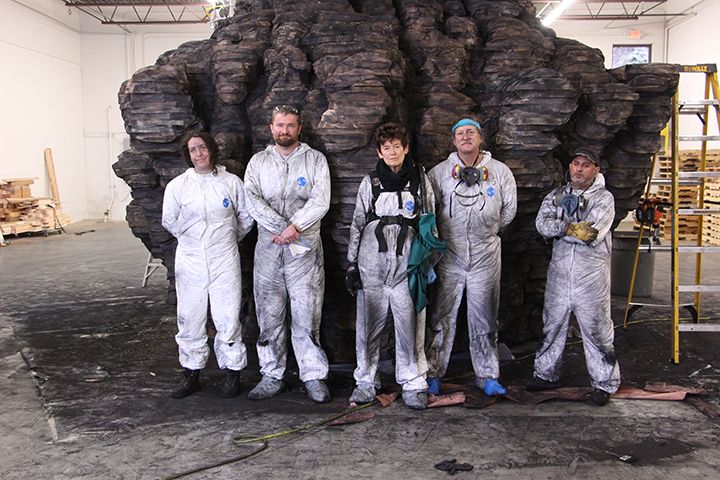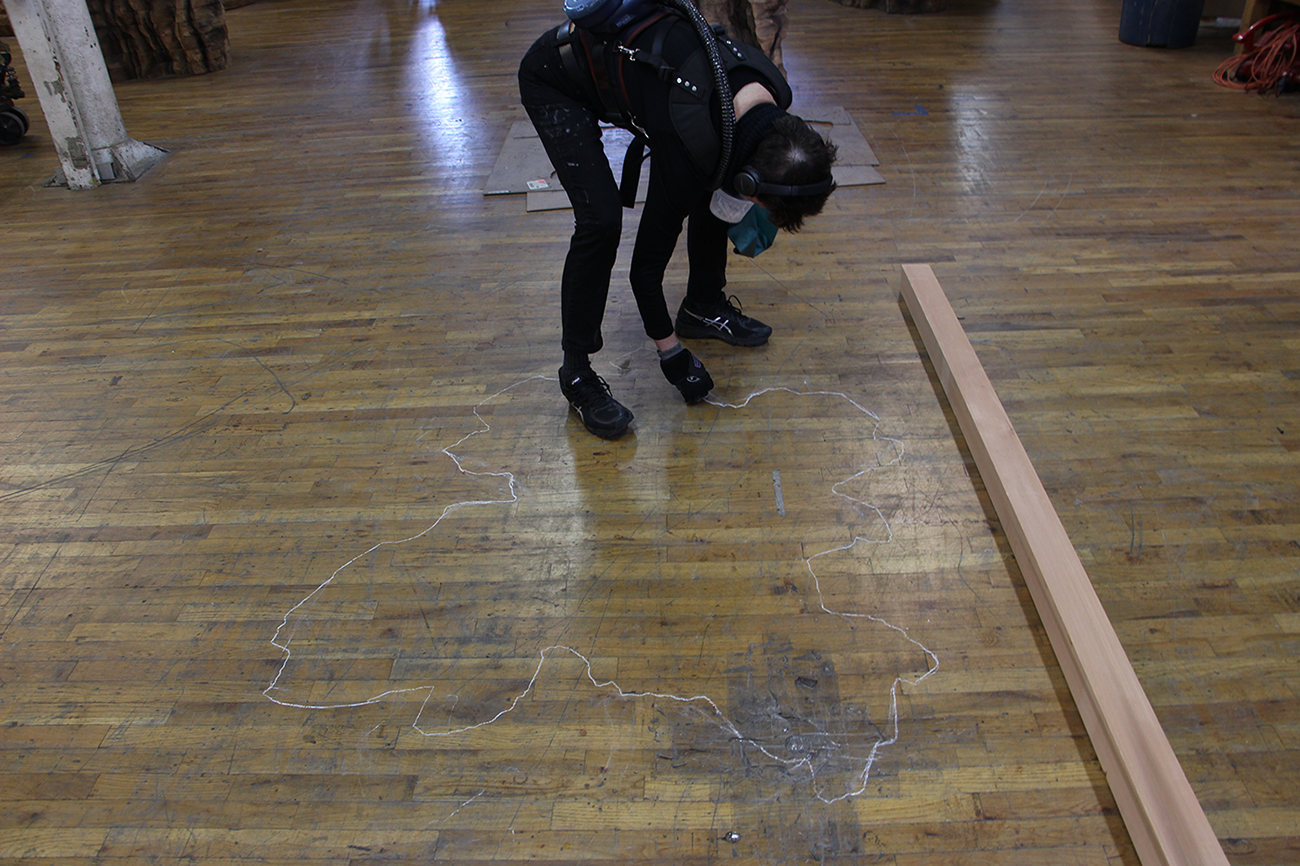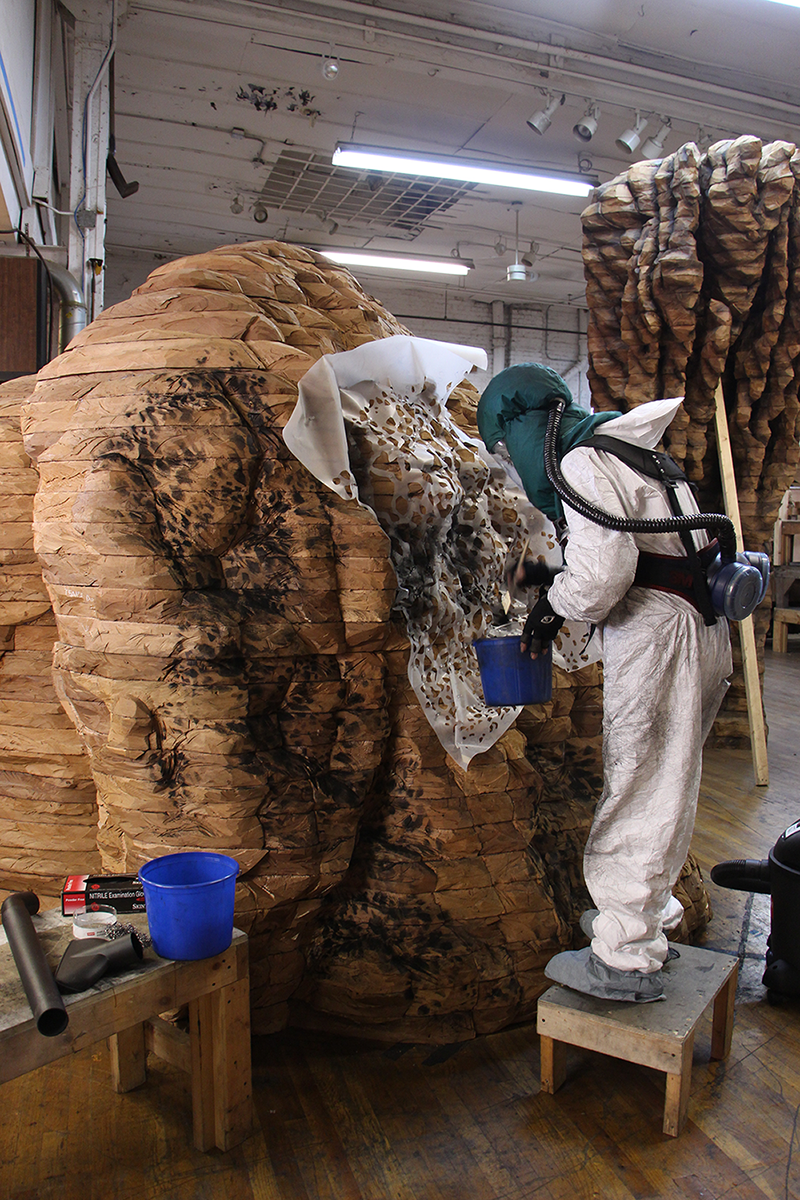Ursula von Rydingsvard: The Contour of Feeling presents the artist’s monumental cedar wood sculptures alongside newer works for the very first time. The poetic and expressive sculptures, which also use leather, linen, and other organic materials, reveal the process by which von Rydingsvard gives outward visual form to her innermost ideas and emotions.

Ursula von Rydingsvard’s sculptural practice is a way to give tangible form to her feelings and ideas. The artist primarily works with cedar wood and describes her relationship to it as emotionally complex. “Cedar is the one material that comes closest to saying what I need to say in a visual form,” she has said, and her skill with it has earned her the moniker “Sorceress of Cedar.” She imports the wood in four-by-four beams from a mill in Vancouver to her studio in Brooklyn. There, she and a team of assistants begin a labor-intensive process to bring her ideas to life. Her artistic process must not only be understood in technical terms, but also as an emotional progression—through the physical act of sculpting, the artist searches for meaning.

Von Rydingsvard begins each sculpture by drawing a chalk outline of a base on the floor. She works intuitively and makes adjustments as she goes. “The worst thing is for me to try to figure out exactly and specifically what the sculpture needs to look like,” the artist has said. She then draws lines on stacked cedar blocks—an intuitive expression of her subconscious—that begin to indicate a work’s detail. From there, von Rydingsvard and her assistants use circular saws to shape the works based on these marks, and powerful adhesives are used to glue each work’s layers together. The team wears protective masks and suits because of the equipment, sawdust, and fumes. Sections of each piece are meticulously numbered and screwed together. Then graphite is applied, which takes easily to the porous wood, giving it a ravaged and dramatic effect. For von Rydingsvard, her work is not so much about precision—though her constructions are undoubtedly precise—as much as it is about making her audience feel something.

In her artist statement, von Rydingsvard writes: “Why do I make art? Mostly, to survive. To survive living and all of its implied layers. Because it’s a place to put my pain, my sadness. Because there’s constant hope inside of me that this process will heal me, my family, and the world.” The intensive and cathartic process of cutting, sawing, gluing, and marking is the artist’s method of survival. Similarly, von Rydingsvard’s favorite sculptor, Louise Bourgeois (1911–2010), also turned to art to “find a mode of survival.” Through her art, Bourgeois dealt with painful memories from her childhood during World War I, while also exploring the role of female identity. Von Rydingsvard similarly works through her past in her art. The artist and her family fled Nazi Germany and lived in refugee camps for several years. These experiences left marks on the artist’s life—marks that are visible in her sculptures. Every cut, every graphite stroke is part of von Rydingsvard’s quest to find meaning through the act of creating a form, a “contour of feeling.”
